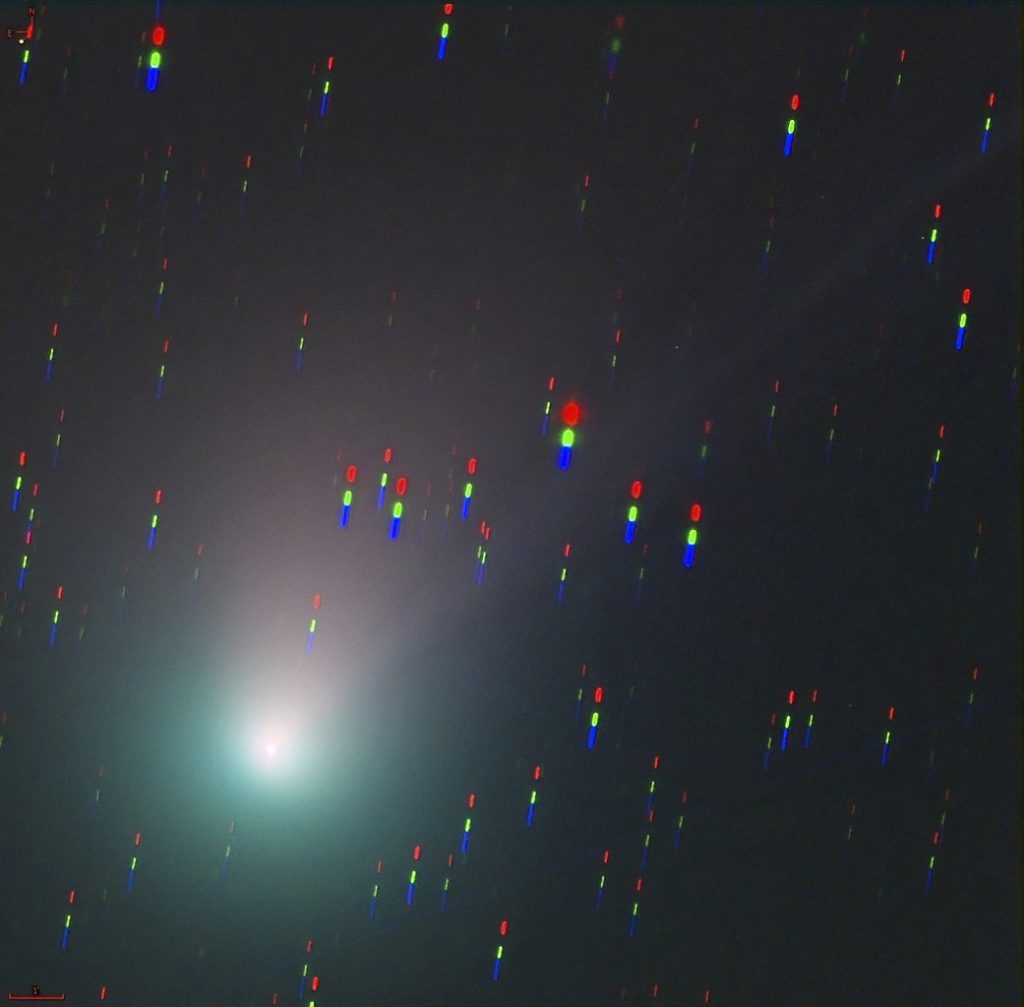- This is your chance to see something that will likely never, ever happen again.
Here at Oddee, we’re in the business of bringing you the rarest and most unusual stories. And you can’t get much rarer or more unusual than something that happens once every 50,000 years.
And soon it will never happen again.
C/2022 E3 (ZTF) is coming. This exceedingly rare comet has entered our solar system and is set to soon pass Earth at the closest point it’ll get to our planet.
At that point, it’ll be visible to the naked eye.
And this sure is a rare occasion. The last time this comet was visible on Earth happened some 50,000 years ago.
To put that into perspective, Neanderthals were close to extinction and still lived at that time. It’s possible some of the last remaining Neanderthals witnessed the green streak blazing through the night sky.
On the other hand, modern humans — our ancestors — had just come up with this new, outlandish idea of living in organized campsites. So, things have changed a bit since C/2022 E3 last came around.
If you’re an astro nerd or just want to see something that you’ll never see again, you’ll want to keep an eye out for the comet. Particularly because you really will not see it again.
Even if you somehow managed to stay alive for the next 50,000 years, there’s no guarantee C/2022 E3 will be back. Astronomers aren’t quite sure about it (since space is a weird place) but according to their calculations, it’s likely the comet will not make it for a third loop.
If there ever was a once-in-a-lifetime chance for anything, this is it.

What is C/2022 E3?
But what actually is C/2022 E3? And where did it come from?
Well, we can’t obviously know where the celestial traveler originated from. The comet could be a piece of an alien planet or moon, or just a chunk of ice that got somehow hurled across the cosmos.
Part of the reason why we know so little about it is that we only recently discovered it. A year ago, nobody (at least no one living) on Earth even knew the thing existed.
C/2002 E3 was first observed on March 2, 2022. The discovery was made by astronomers Bryce Bolin and Frank Masci from the Palomar Observatory in California.
They noticed the star while using the Zwicky Transient Facility, an astronomical survey that scans the night sky of the Northern Hemisphere for new objects every two days. Hence the ZTF ending in C/2002 E3’s name.
The comet entered the solar system somewhere in the vicinity of the Oort cloud in the far, far periphery of our corner of space. From there, it has been steadily traveling toward Earth.
How to See the Comet
So, if you’d like to see this small cosmic miracle, where and when do you need to be?
Sadly, you’ve already missed your first chance. On January 12, C/2022 E3 reached its perihelion, or the point of its journey when its closest to the Sun.
Don’t feel too bad, though. Although the Sun’s light made the comet shine brightly, you still would’ve needed a strong-ish telescope to see it from Earth.
Your next chance to see the comet will come on the night of January 26 and 27. At that time, C/2002 E3 will be visible just east of the Little Dipper’s bowl.
Astronomers say that at that time, the comet should be closer enough to be visible to the naked eye. However, without a telescope, you can only see a faint dot in the sky.
If you’d like to see the comet’s green tail, you’ll have to use something to enhance your vision. A telescope is recommended, but even binoculars might be enough.
But your best shot to marvel at C/2002 E3 will come on February 1. At that time, the comet will be at its closest to Earth — a mere 28 million miles away.
So, in the early morning hours of February 1, hone your eyes or telescope in the direction of the constellation of Camelopardalis to enjoy the show.
If you happen to miss that date, the comet will be more or less faintly visible until February 6. Then, it will zoom past the star Capella and disappear from regular people’s sights.
Whether it’ll return dozens of millennia into the future, none of us will ever know.
Hits: 1












